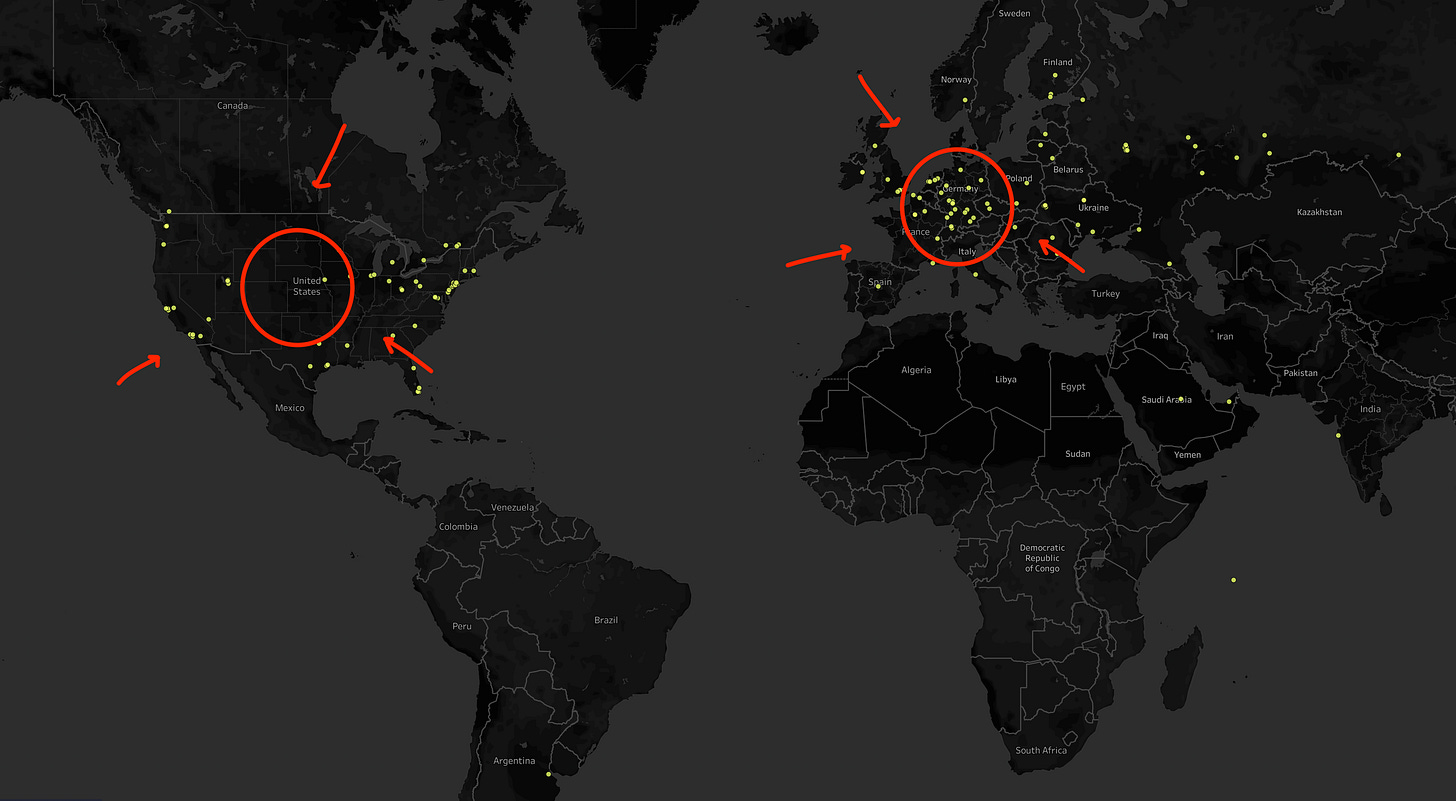Yield acting as the only incentive for those deciding where to stake will lead to a centralization problem. Yield is a necessary part of the validator reward system; it's fundamental to any POW network's growth. If we're to prioritize decentralization, we must find other incentives in combination with yield that will attract third-party stake in a manner that results in a more optimal distribution of the network.
Clusters of validators are forming in the same regions, countries, and cities. Since PoS is in its early stages, some centralization is expected, and the causes are understood intuitively — it's early. Many overlook the fact that without additional incentives for those staking, it will only get worse. Why will it get worse, and why does it happen? To better understand, we can reference Hotelling's Game and the hot dog stand problem.
Assume there are two hotdog stands on a beach, whose products are equal in value. Optimally, these hotdog stands would better serve their customers if they were equally spread across the beach to serve the beach population — minimizing the total distance needed to travel. Distance is the only incentive for beachgoers to choose one over the other.
If the layout of the stands were optimal, the incentive for the first hotdog stand maintainer to move to the right is high. This move would enable him to capture all his previous customers and more of those who would have walked to his competitor. It would invariably start a chain of subsequent adjustments from both stands, competing to offer the highest return on the only incentive that differentiates them — the shortest distance to travel.
The result is a non optimal layout of two hotdogs stands directly next to each other — a Nash Equilibrium. There is no direction any hotdog stand could move that would generate more customers.
Solana's network, which currently has the highest Nakamoto coefficient of any proof-of-stake network, is developing a similar equilibrium in Germany and a few other places. For a decentralized blockchain, it's inefficient to have its validators be next to one another. Why is it happening? Like the hot dog stand, whose main differentiator is distance, a validator’s is a yield. Competition to offer the highest yield produces pressure to lower commissions — similar to a hot dog stands pressure to move toward a competitor. To improve yield, a maintainer will want to reduce cost and improve speed, so maintainers will move to data centers that offer lower fees. Data centers with a higher volume of customers will be able to use those efficiencies to reduce costs — making it harder for new entrants without those efficiencies to compete. Like the hot dog stands, which end up non-optimally next to one another, so will validators.
Neighboring hotdog stands and clustered validators non optimally serve their customers. Yield as an incentive alone will produce a network less decentralized than fit to meet the world's needs. etherfuse plans to address this by adding incentives that introduce added value via hyper localization. This year, we will introduce additional incentives which will promote more substantial decentralization across regional, political, corporate, and ownership subsystems.








